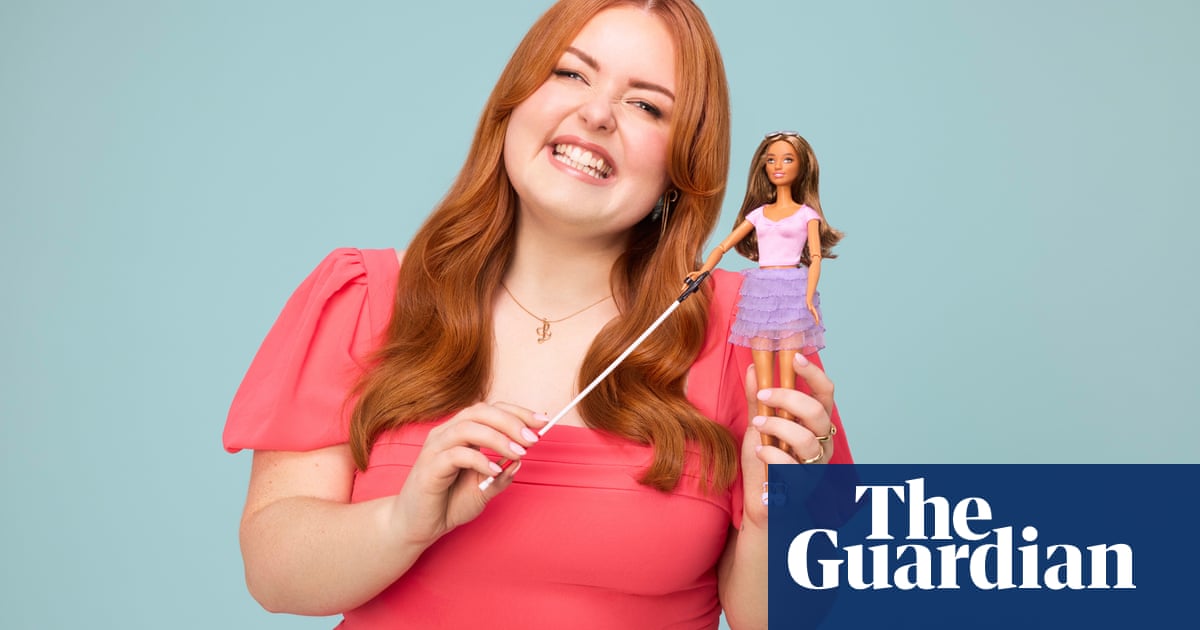Six decades after the original Barbie hit shelves, Mattel is launching its first blind Barbie doll in an effort to make its range more inclusive.
The US toymaker said the doll, which is now available online and instore, has been created in a bid to make blind and low-vision children more represented within society.
In a statement, Krista Berger, the senior vice-president of Barbie and the global head of dolls, said: “We recognise that Barbie is much more than just a doll; she represents self-expression and can create a sense of belonging.”
The company has worked with the American Foundation for the Blind to ensure that everything from the doll’s eyes to its clothing accurately depict people with blindness and low vision.
The doll holds a white and red cane with a marshmallow tip while its eye gaze faces slightly up and out to “accurately reflect the sometimes-distinct eye gaze of a blind individual”.
After conducting testing with blind and low-vision children, it was decided that the doll should be dressed in clothing with tactile fabric detailing including a pink satin T-shirt and purple tulle skirt. Details such as loop fasteners on the back of the doll’s top and elastic waistband on the skirt were created in an effort to ensure that dressing the doll is easier. The packaging is also more accessible than its standard offering and includes the word Barbie written in braille on the front of the box.
Lucy Edwards, a disability activist and broadcaster who is blind and appears in a campaign with the new Barbie, said the launch of the doll means “everything to me”, adding: “As a teenager, I felt isolated by losing my eyesight and not seeing role models like me. I was embarrassed by my cane – but knowing Barbie had a cane would have made me feel so differently about mine and helped me feel less alone on my journey to accept and embrace my blindness.”
The launch is being supported in the UK by the RNIB (Royal National Institute of Blind People). “Barbie is all about joy – about discovering and understanding the world through play – and it’s wonderful to think that children with a vision impairment can now play with a Barbie that looks like them,” said Debbie Miller, the director of customer advice and support at the charity.
“We’re so pleased with the details that have gone into designing this new Barbie – the tactile clothes as well as the cane and the sunglasses. It’s an acknowledgment that not everyone can see well, which means a lot to the blind and partially sighted community. This is a positive step forward in helping children and adults with sight loss feel like they belong and are recognised.”
In addition to its first blind Barbie, Mattel has also partnered with the American organisation the National Down Syndrome Society to launch its first black doll with Down’s syndrome. It follows the release of a white doll with Down’s syndrome last year. Guided by the NDSS, the doll features a shorter frame, longer torso and low muscle tone to reflect the physical characteristics some people with the genetic condition have. The doll also features a braided hair texture, a key feature requested by a focus group made up of Black individuals from the Down’s syndrome community that the NDSS worked with.
Both dolls are part of the Barbie Fashionistas range that originally launched in 2009 and for the first time offered a small selection of dolls with different body types and skin tones. In 2019 the range was expanded to include 176 dolls with nine different body types, 35 skin tones and 94 hairstyles. It also debuted a doll with a prosthetic leg and a wheelchair user. In 2022 the first deaf Barbie was released along with a Ken doll with vitiligo, an autoimmune disease that causes the skin to lose pigment.

